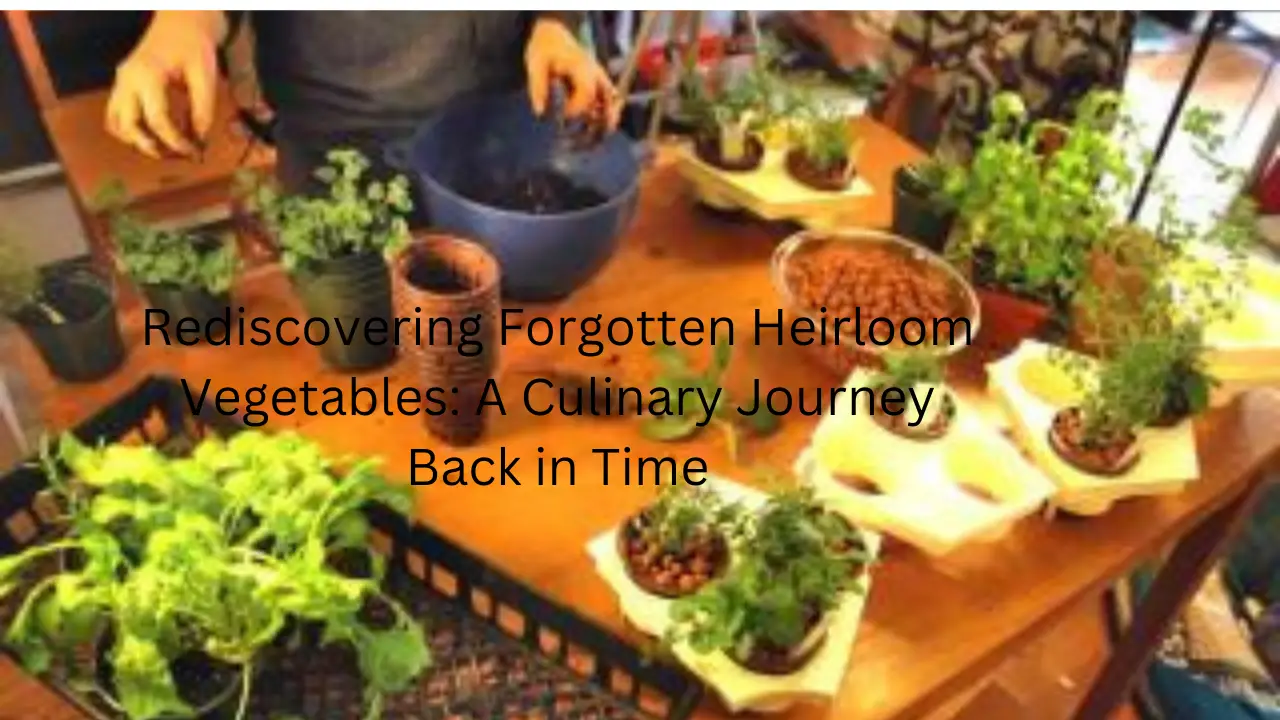
Utopia Bedding Queen Bed Sheets Set - 4 Piece Bedding - Brushed Microfiber - Shrinkage and Fade Resistant - Easy Care (Queen, Grey)
33% OffRediscovering Forgotten Heirloom Vegetables: A Culinary Journey Back in Time
In today’s fast-paced world of food production, we often find ourselves enjoying the convenience of modern vegetables available at our local grocery stores. These vegetables are bred for uniformity, shelf life, and ease of transportation, but they often lack the rich flavors and unique characteristics of heirloom vegetables. In this article, we’ll embark on a journey to rediscover forgotten heirloom vegetables, exploring their history, taste, and why they deserve a place in our modern diets.
Introduction
In the hustle and bustle of modern life, we often overlook the treasures that lie within our past. One such treasure is heirloom vegetables. These are the vegetables our ancestors cultivated with care and passed down through generations. Heirloom vegetables offer not just nutrition but also a taste of history and a connection to our culinary roots.
What Are Heirloom Vegetables?
Heirloom vegetables are open-pollinated varieties that have been carefully preserved for their unique traits. Unlike commercially grown vegetables that prioritize uniformity and yield, heirlooms come in diverse shapes, colors, and flavors. Each heirloom vegetable has a story to tell, a history that predates modern agriculture.
The Historical Significance
Heirloom vegetables have a rich history, dating back centuries. They were the staples of our ancestors’ diets, grown for their adaptability and flavors. Exploring the past can help us understand the agricultural traditions that shaped our world.
The Diversity of Heirloom Varieties
From the vibrant hues of Cherokee Purple tomatoes to the knobby, earthy beauty of Russian Banana fingerling potatoes, heirloom vegetables offer a diverse array of flavors and appearances. Rediscovering these varieties can bring excitement back to your plate.
Flavors That Tell Stories
Heirloom vegetables aren’t just about looks. They offer a depth of flavor that is often lost in modern hybrids. The intense sweetness of a Brandywine tomato or the nutty richness of a Musquee de Provence squash can transport you to a different time and place.
Cultivating Heirloom Vegetables
Growing heirloom vegetables in your own garden is a rewarding experience. These plants often require more care than modern hybrids, but the effort is well worth it when you taste the exceptional flavors they produce.
The Sustainability Factor
Heirloom vegetables also play a crucial role in sustainable agriculture. Their genetic diversity makes them more resilient to pests and diseases, reducing the need for chemical interventions. By cultivating heirlooms, we contribute to a healthier planet.
Cooking with Heirlooms
Heirloom vegetables can be the stars of your kitchen. Whether you’re making a rustic Ratatouille with heirloom eggplants or a vibrant Caprese salad with heirloom tomatoes, these vegetables elevate your culinary creations.
Health Benefits of Heirloom Vegetables
Nutritionally, heirloom vegetables often outshine their modern counterparts. They tend to be richer in vitamins, minerals, and antioxidants. Incorporating them into your diet can boost your health.
Preserving Heirloom Seeds
Preserving heirloom seeds is essential to safeguarding these treasures for future generations. Seed-saving practices ensure that these unique varieties continue to thrive.
Where to Find Heirloom Vegetables
While heirloom vegetables may not be as readily available in supermarkets, there are numerous seed banks, farmers’ markets, and online stores dedicated to preserving and promoting these gems.
Bringing Heirlooms to the Table
Introducing heirloom vegetables to your family’s table can be a delightful experience. Their flavors will spark conversations and connect you to the culinary traditions of the past.
Challenges in Promoting Heirloom Vegetables
Despite their many virtues, heirloom vegetables face challenges in a world dominated by commercial agriculture. Raising awareness and supporting heirloom growers is crucial to their survival.
Embracing the Past for a Sustainable Future
Incorporating heirloom vegetables into our diets isn’t just a culinary choice; it’s a step towards a more sustainable and flavorful future. Let’s honor our ancestors’ wisdom and savor the tastes of the past.
Conclusion
Rediscovering forgotten heirloom vegetables is a journey worth embarking on. These vegetables offer not only unique flavors but also a connection to our history and a path to a more sustainable future. So, take a step back in time and savor the delicious heritage of heirloom vegetables.
FAQs
- Where can I buy heirloom vegetable seeds?
- You can find heirloom vegetable seeds at local seed banks, farmers’ markets, or online seed stores specializing in heirloom varieties.
- Are heirloom vegetables more difficult to grow than modern hybrids?
- They may require more attention and care, but many gardeners find the experience rewarding, and the flavors are worth the effort.
- Do heirloom vegetables cost more than regular vegetables?
- The initial seed cost might be slightly higher, but many enthusiasts believe the unique flavors justify the expense.
- Can I use heirloom vegetables in modern recipes?
- Absolutely! Heirloom vegetables can be substituted for modern varieties in most recipes, adding depth and character to your dishes.
- How can I get involved in preserving heirloom vegetables?
- You can support organizations dedicated to heirloom preservation, participate in seed-saving initiatives, or start your own heirloom garden to contribute to their conservation efforts.
Rediscovering heirloom vegetables is a culinary adventure that connects us to our roots and supports a more sustainable food future. So, why not embark on this journey and savor the flavors of the past?q











